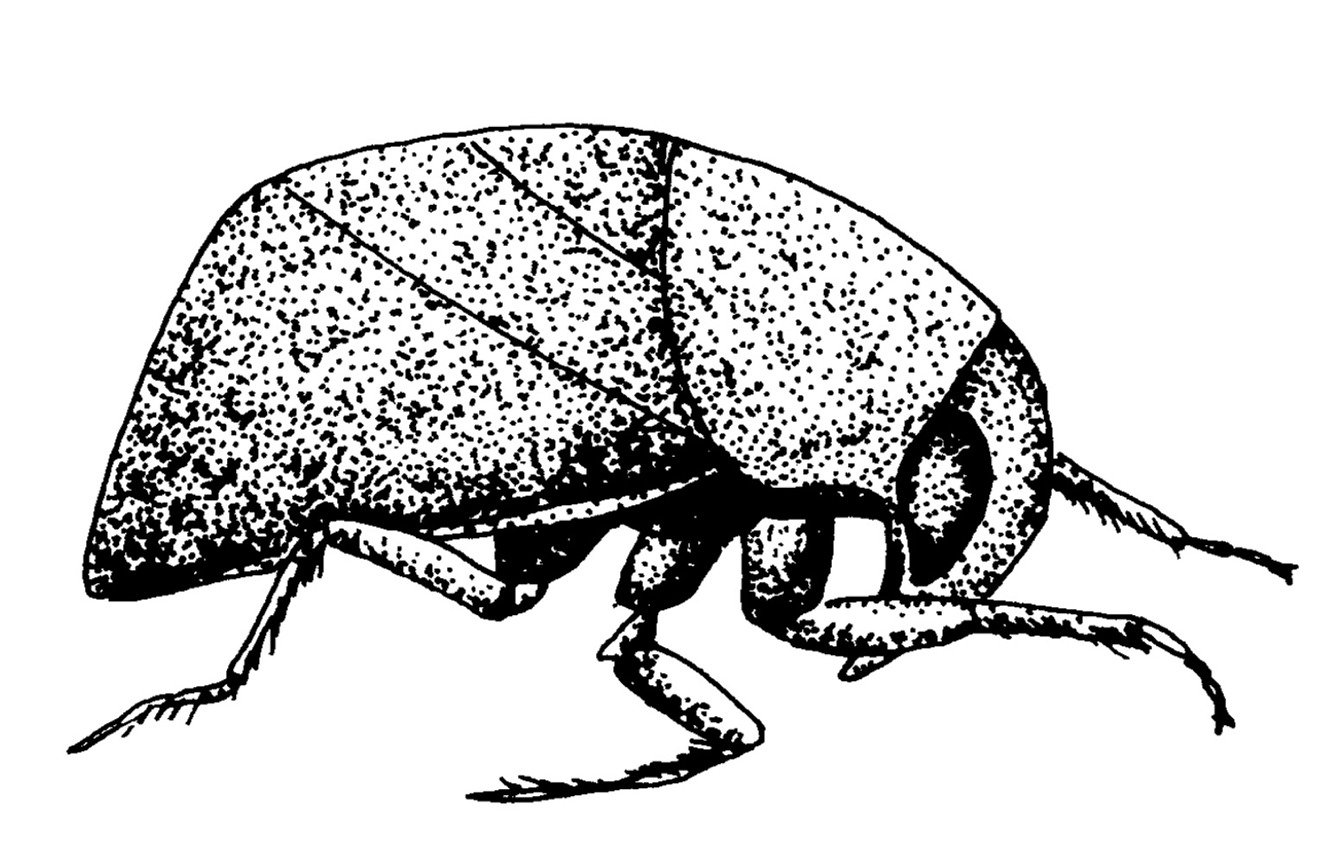- Pleidae
Taxobox
name = Pygmy backswimmers

image_caption = "Plea minutissima "
image_width = 240px
regnum =Animal ia
phylum =Arthropod a
subphylum =Hexapoda
classis =Insect a
subclassis =Pterygota
infraclassis =Neoptera
superordo =Exopterygota
ordo =Hemiptera
subordo =Heteroptera
infraordo =Nepomorpha
unranked_familia =Tripartita
superfamilia =Pleoidea (disputed)
familia = Pleidae
familia_authority = Fieber, 1817
subdivision_ranks =Genera
subdivision = "Neoplea "
"Paraplea "
"Plea"Pleidae, the pygmy backswimmers, is a family of aquatic
insect s in the orderHemiptera (infraorder Nepomorpha , or "true water bugs"). There are 37species in threegenera , distributed across most of the world, except thepolar region s and remoteocean ic islands.Zack "et al." (2007)]Pleidae belong to the
Tripartita which contains the more advanced lineages of true water bugs, and are closely related to the truebackswimmer s (Notonectidae), but closer still to theHelotrephidae , another family of tinyNepomorpha , which usually swim upside-down and, like the Pleidae, have a sensory organ in the center of theclypeus . Either the pygmy backswimmers are united with the Helotrephidae in thesuperfamily Pleoidea , or these two and the true backswimmers are placed in a single superfamily Notonectoidea. [Hebsgaard "et al." (2004)]Distribution
In
Europe there is a single species, "Plea minutissima ", where it widely found. "Plea" species occur in theOld World , while "Neoplea " is found in theAmericas . "Paraplea " can be found in all warmer parts of Earth, includingAustralia , where three species occur. Given their inability to fly well – if they can fly at all –, it is not surprising that the Pleidae do not have as many endemic islandtaxa as some otherHeteroptera (true bugs). Only five species are known from theMalesia narchipelago . "Neoplea apopkana " has been introduced to theHawaiian Islands inPolynesia . One species, originally native toSouth Asia andSoutheast Asia , was found inaquaria inNew Zealand . In 2006, "Paraplea puella " was found to be introduced toGuam inMicronesia . Like the preceding, this originally American species was probably accidentially introduced with aquarium plants.Description
These tiny
Hemiptera are only 2-3 mm long and usually of a light brownish color overall. Their body is oval, plump, with aconcave back. Theircompound eye s are large and theocelli vestigial, like in otherNepomorpha . Also characteristic for the infraorder are the short and weak antennae which are usually carried tucked to the head. In the case of the Pleidae the antennae are shorter than the head is long and only consist of three segments.The
scutellum is small and triangular. The wings are reduced in some fully flightless species, but normally developed in most; due to their compact, rotund bodies and generally short wings, even those with well-developed wings fly weakly at best. By and large the Pleidae may be considered an effectively flightless group when it comes tobiogeography and dispersal into newhabitat .The tarsi consist of two or three segmnents; two claws are borne on the last tarsal segment of the hindlegs. Though the hindlegs are hairless and appear ill-suited for swimming compared to the stout "flippers" of the
water boatmen (Corixidae) or thebackswimmer s (Notonectidae), the small size of the pygmy backswimmers makes for different physics and allows them to swim well regardless.Both sexes are able to
stridulate . The sounds they produce apparently have anintraspecific communication function, as the animals are able to perceive and react to them. Possibly they make sounds to maintain contact among the looseswarm s in which these Pleidae roam theirhabitat .The
larva e havegland s between the third and fourthabdominal tergite . Development is direct, without apupa l stage.Ecology
Pygmy backswimmers inhabit
lacustrine ecosystem s, where they occur in loose groups. Like many of their relatives, they arepredator y, hunting other tinyinvertebrate s, from which they suck out the body fluids with their rostrum. They can to some extent biologically controlmosquito larvae. Unlike truebackswimmer s (Notonectidae), they are completely harmless to humans, as their rostrum is far too small to pierce skin.Their hindleg claws enable them to clamber through vegetation which apart from swimming is their main form of
locomotion . Like Notonectidae, they are in an upside-down position when swimming. This is ultimately due to the fact that as alltrue water bug s, Pleidae are air-breathers withoutgill s. Similar to the true backswimmers, pygmy backswimmers carry an air reserve with them which is periodically replenished by a dash to the water's surface. This air is contained in a felt-like cushion on the underside. Thus, the belly has higherbuoyancy , resulting in the animal turning upside down as soon as it lets loose from thesubstrate .Footnotes
References
:"This article draws heavily on the corresponding article in the German-language Wikipedia."
* (2004): Phylogeny of the true water bugs (Nepomorpha: Hemiptera–Heteroptera) based on 16S and 28S rDNA and morphology. "Systematic Entomology" 29(4): 488-508. [http://www3.interscience.wiley.com/journal/118778354/abstract HTML abstract] [http://dna.gfy.ku.dk/mbh/papers/Hebsgaard_Syst_Ent_2004.pdf PDF fulltext]
* (2007): First record of a pygmy backswimmer (Hemiptera: Heteroptera: Pleidae) from Micronesia. "Zootaxa " 1617: 67-68. [http://www.mapress.com/zootaxa/2007f/zt01617p068.pdf PDF fulltext]
Wikimedia Foundation. 2010.
